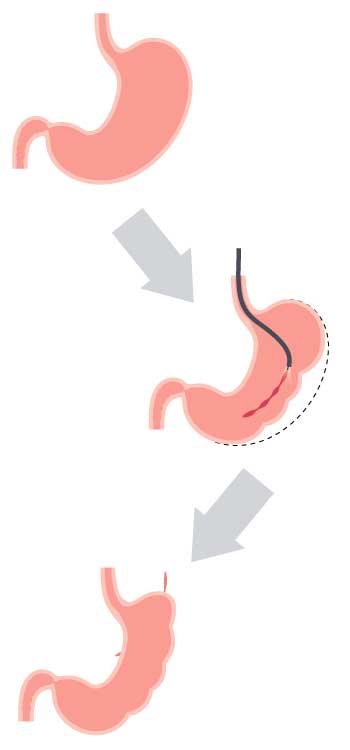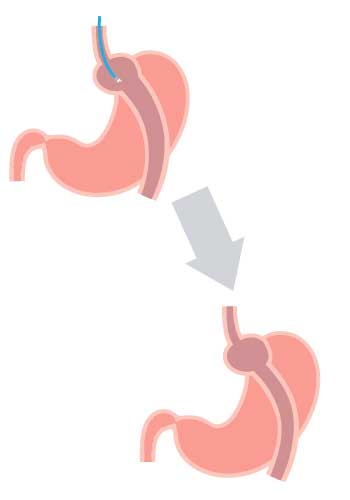Endoscopic Sleeve Gastroplasty (ESG)
An endoscopic sleeve gastroplasty (ESG) is a minimally invasive, non-surgical procedure that promotes weight loss by reducing the size of the stomach. Using an endoscope, the stomach is stitched internally, creating a sleeve-like shape without any incisions. Once the procedure is completed, the patient feels fuller faster, which reduces calorie consumption and leads to weight loss.
This procedure lowers the risk of serious weight-related health problems including:
- Heart disease and stroke
- High blood pressure
- High cholesterol levels
- Type 2 diabetes
- Sleep apnea
- Nonalcoholic fatty liver disease (NAFLD) or nonalcoholic steatohepatitis (NASH)
ESG has been shown to be a safe procedure, but just like every medical procedure, there are some risks. Nausea and pain may happen several days after the procedure, but these symptoms are usually managed with medicine and most patients feel better after a few days.
This procedure also requires lifestyle changes for it to be successful. After the procedure, patients begin a liquid diet which needs to be continued for at least two weeks. Eventually, patients can move on to semisolid foods, then need to move to a regular healthy diet.
Don’t worry! Prior to your procedure, your physician will do a full walk through of how to prepare for your procedure and what aftercare needs to be done following the procedure. Our team is here to help you make sure you get the results you are hoping for!




